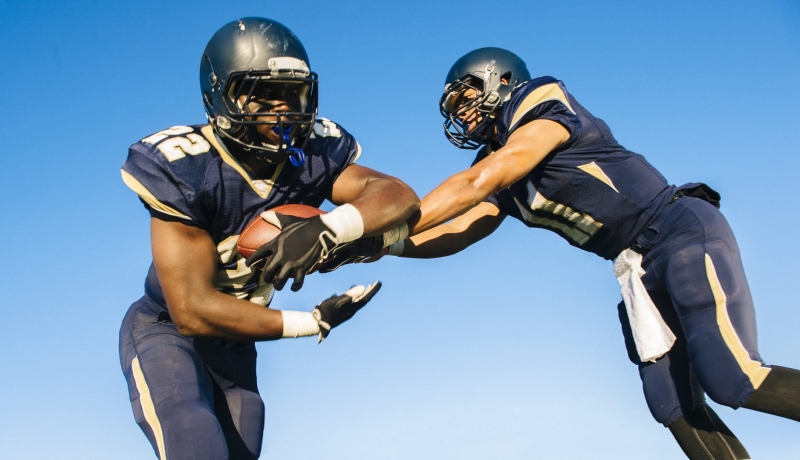Contents
The Super Bowl is one of the most-watched live events in the world. As you can imagine, capturing every moment on and off the field is a massive challenge. With over 240 cameras positioned around the stadium, broadcasters and photographers work under extreme pressure. Their goal is to ensure no crucial play, emotional reaction, or halftime spectacle is missed. But what exactly goes into filming and photographing an event of this scale? Let’s explore the challenges those behind the cameras face.
Sony meets Super Bowl: Coordinating 240+ cameras in real-time
This year’s Super Bowl is covered all around by Sony. With 97 Sony HDC Series broadcast cameras, high-speed cameras, and SkyCam systems, the Super Bowl’s video production is one of the most advanced in sports. FOX Sports, the official broadcaster, is using over 100 cameras for live coverage, including those dedicated to streaming. The challenge? Making sure every camera works together to give viewers the best possible experience.
As Michael Davies, FOX Sports EVP of Field Operations, explains, “The Super Bowl is not just the biggest game of the year, it is also the biggest production. Our job is to tell the story of the game, capturing the energy within the stadium and keeping billions of viewers engaged, and Sony is a key tool in reaching that goal.”
Balancing action and photojournalism at the Super Bowl
FOX Sports’ cameras focus on dynamic storytelling, while photographers from the Associated Press (AP) and NFL’s in-house team (NFL Focus) capture defining moments from the sidelines. Using Sony mirrorless cameras and telephoto lenses, they aim to document key plays, emotional reactions, and behind-the-scenes moments.
Speed is critical. With Sony PDT-FP1 transmitters, photographers send images directly from their cameras to editors in real time. This allows for instant uploads to news sites and social media within minutes of the action.
Neal Manowitz, President and COO of Sony Electronics North America, highlights the importance of this workflow: “We are proud to play a critical role in Super Bowl LIX, drawing on our decades-long record of imaging innovation and production expertise to ensure that every fan watching on-site or at home has the best seat in the house.”
Instant replay and officiating: The tech behind the calls
Every Super Bowl moment is examined closely, and officiating mistakes can be costly. That’s where HawkREPLAY and Hawk-Eye technology come in. These systems provide instant access to multiple camera angles, helping officials and producers analyze plays, make fair calls, and deliver crystal-clear replays to viewers.
The Halftime Show: Filming with no retakes
While the game itself is challenging to film, the Super Bowl Halftime Show presents a different set of difficulties. Unlike fast-paced sports broadcasting, the halftime show is filmed like a concert movie. This year, Funicular Goats is leading the production, using a 14-camera setup featuring the Sony VENICE 2, the VENICE Extension System, and the BURANO.
As James Coker, Head of Engineering and Technical Management at Funicular Goats, explains, “The Super Bowl Halftime Show is a challenge unlike any other project we’ve been a part of. There are less than five minutes to set up and deliver a cinematic concert to millions of people, and the Sony Cinema Line cameras provide the perfect combination of full-frame sensor with broadcast compatibility to work seamlessly within the show’s structure and achieve this challenge.”
How they make it work
Some techniques used to capture the halftime show include:
- Pre-planned camera choreography – Camera operators rehearse movements in advance. This way, chances are much bigger for smooth execution and successful shots.
- Use of full-frame sensors – These provide a cinematic depth of field, making the show look rich and dynamic.
- Seamless broadcast integration – Despite their film-like quality, these cameras must sync perfectly with the live broadcast.
Lessons for photographers and videographers
The Super Bowl is, without a doubt, a masterclass in live production. Here are some takeaways for photographers and videographers:
- Positioning is key – Whether shooting sports, concerts, or weddings, knowing where to be at the right time makes all the difference. Of course, follow the official guidelines and don’t put either yourself or others in danger.
- Speed matters – Fast workflows, such as real-time transmission systems, can give you a significant edge.
- Adaptability is crucial – Live events are unpredictable. So, think fast and always be ready to adapt to any changes and challenges that may occur.
Although filming and photographing the Super Bowl is challenging, it’s far from impossible. With careful planning, cutting-edge technology, and experienced professionals behind the lenses, the final results are nothing short of spectacular.

